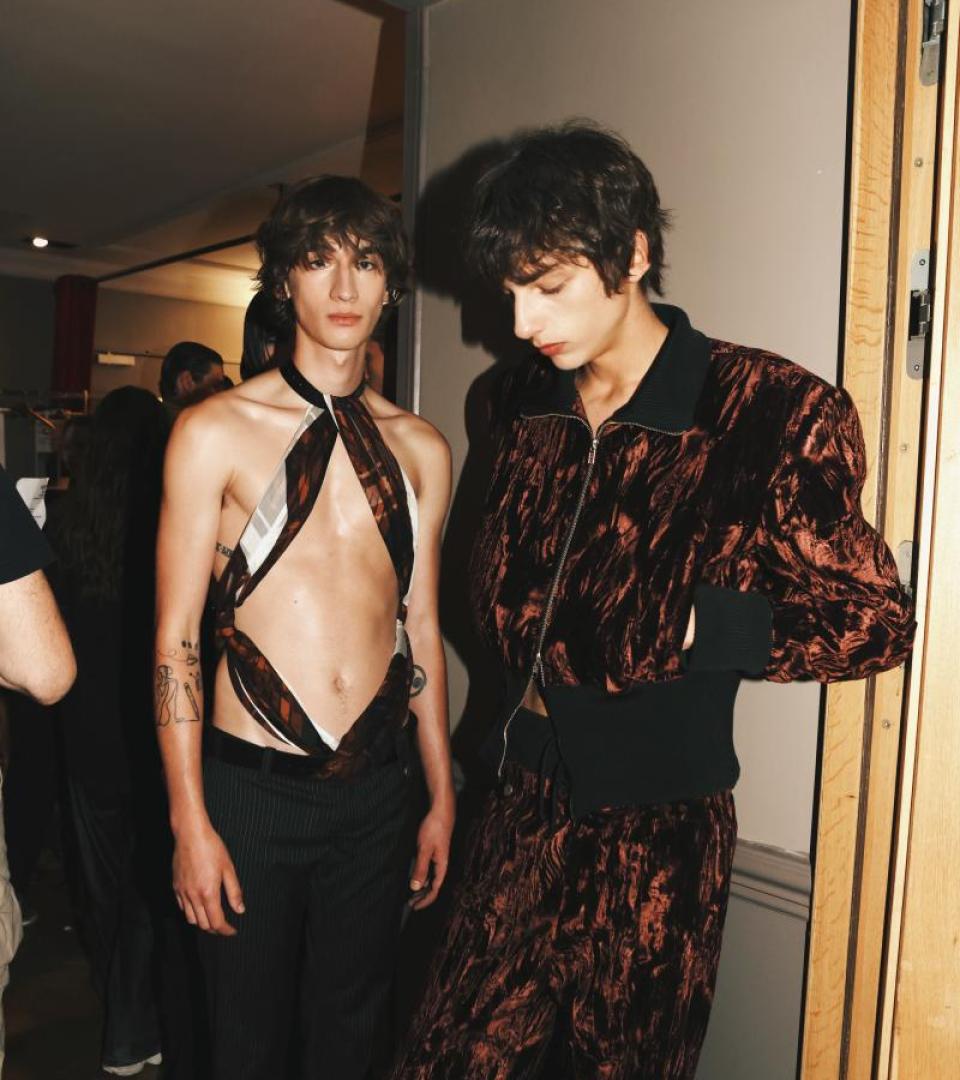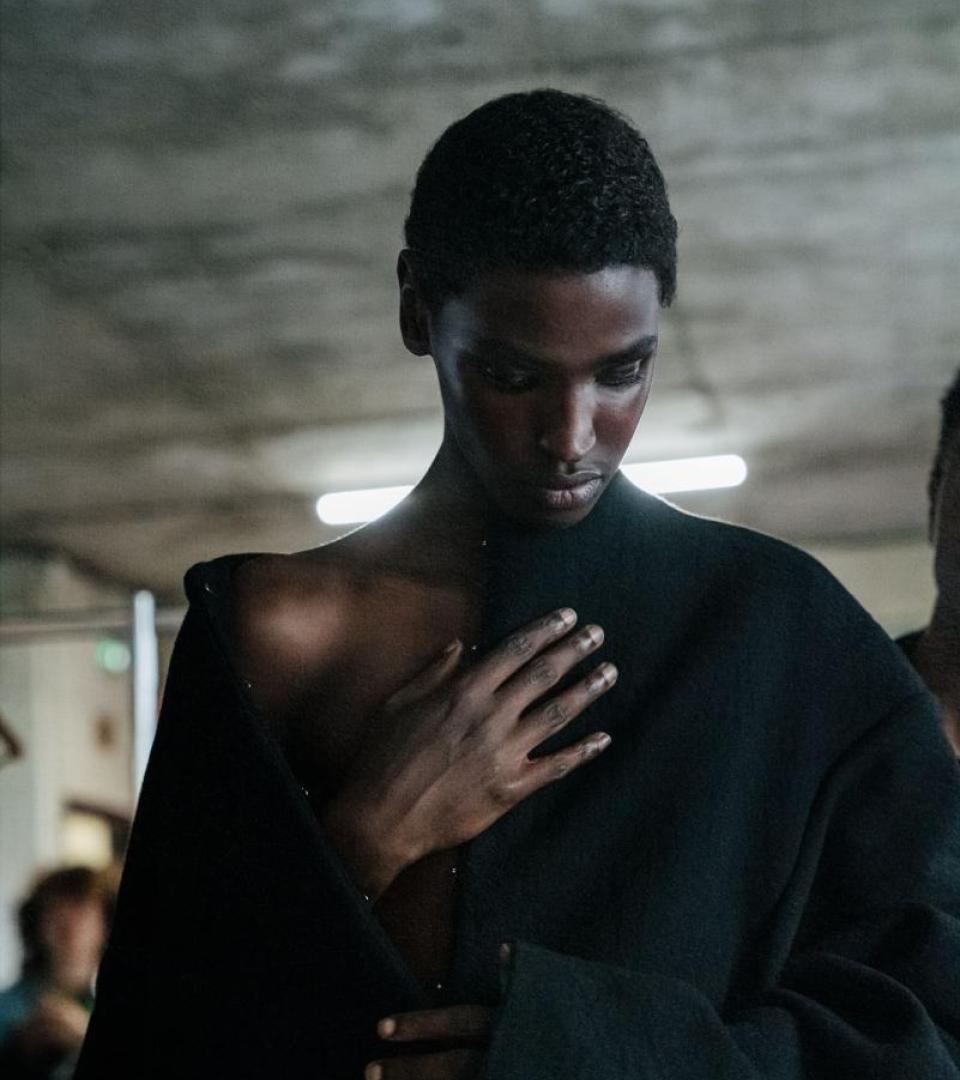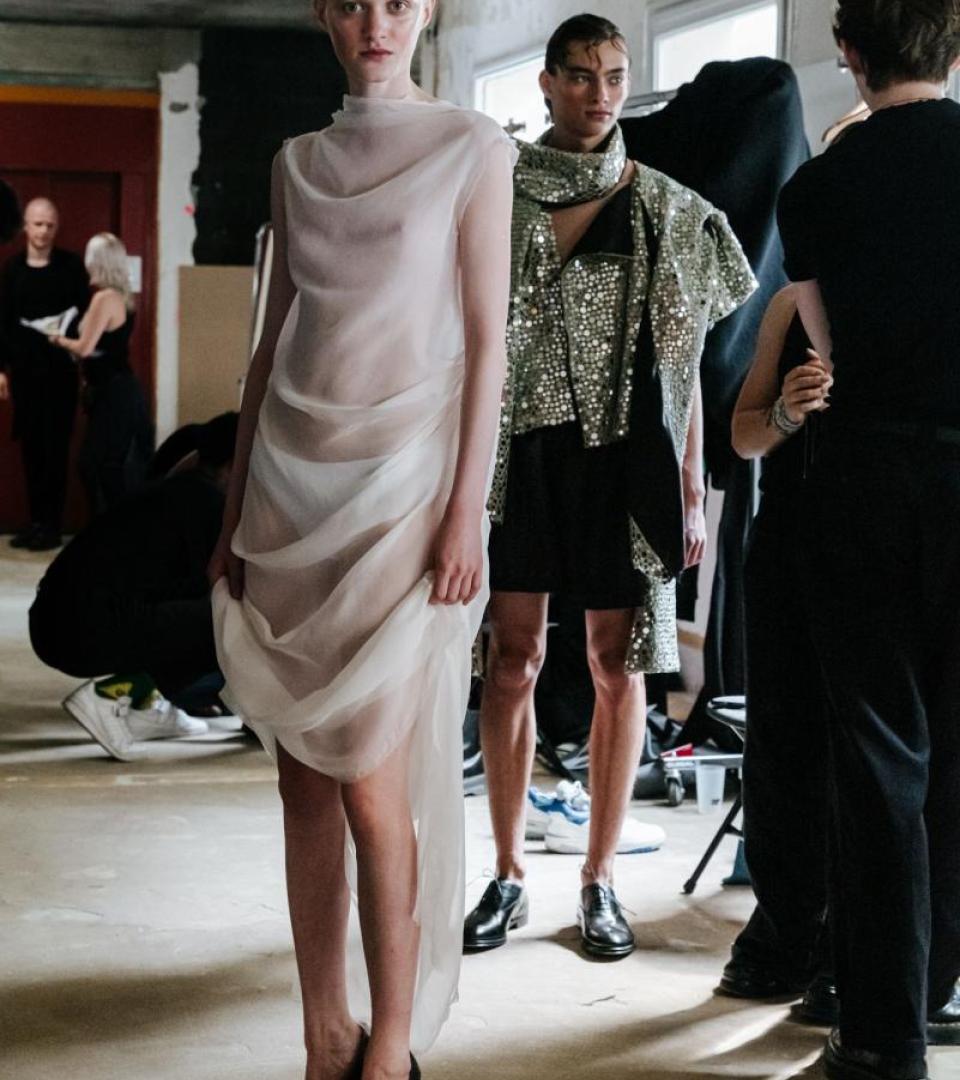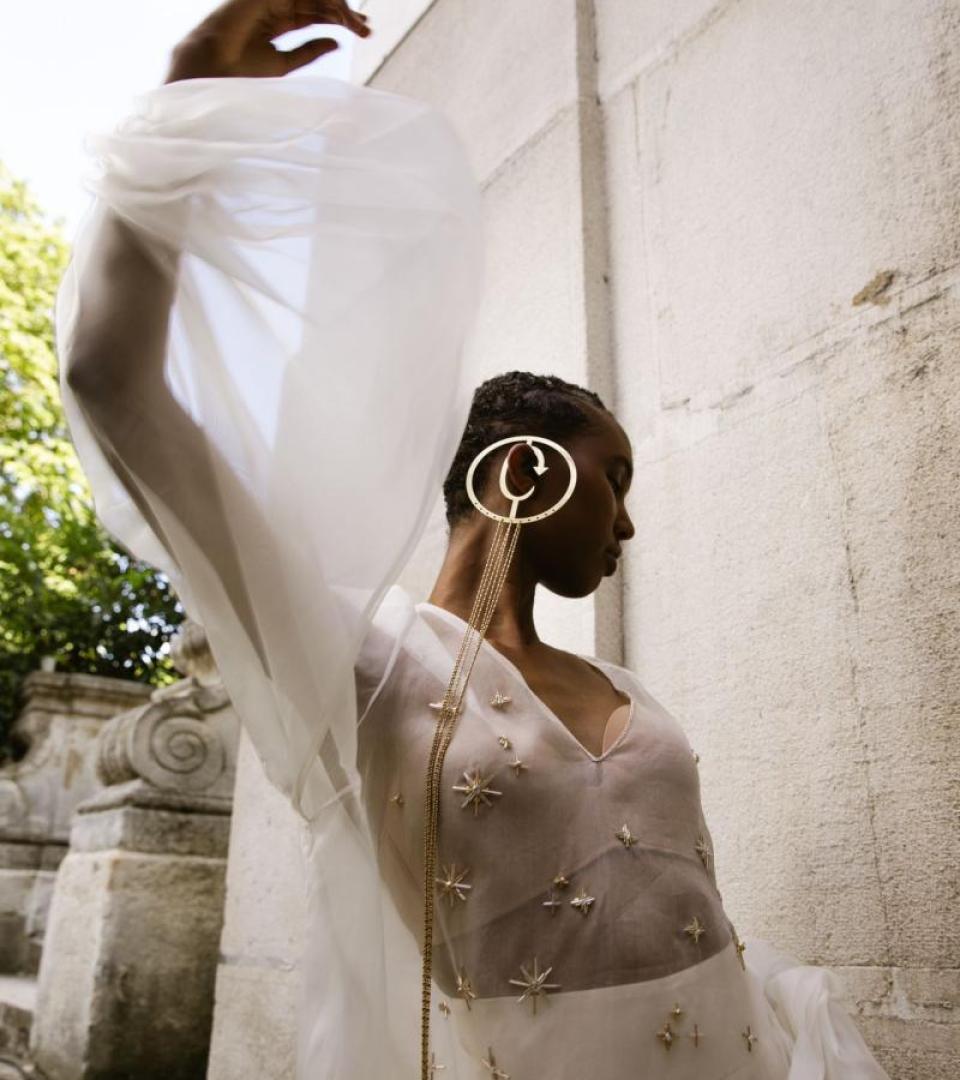For the Love of Avellano’s Latex
By Paul McLauchlan
The latex drama unfurling on the runway at Arthur Avellano’s Spring Summer 2024 show at the Institut du Monde Arabe crystallised an extraordinary year for the young designer. Having won the Pierre Bergé Prize at the 2023 ANDAM Prize (a €100,000 infusion of funds into his nascent operation along with mentorship from Lacoste CEO Catherine Spindler). He was also the costume designer for a new production at the Paris Opera Ballet. He brings these worlds together for his show, which features an operatic voice as models file down the catwalk in tailoring and eveningwear – the sexy yet elegant power dressing that has become signature.
A significant development this season is that Avellano is working with a new latex supplier on board, allowing him to develop his own colours. He gravitated towards gold to represent the gilded interior of Palais Garnier and platinum to evoke statuesque beauty. He manipulated the latex to emulate snakeskin and astrakhan.
At the core of Avellano is a sustainable philosophy built around his fabric of choice which happens to be biodegradable. Moreover, people might not realise that latex is actually natural fibre. Everything is produced on a made-to-order basis – for now – by a small team of artisans in his Paris atelier. His creativity and commitment show no signs of slowing.
“Our customers and celebrities are more interested in spending money on an expensive, unique dress rather than a t-shirt,” said Avellano, over Zoom, from his Paris studio days before the show.
What would you like us to know about this collection?
I’m continuing with the style of the last collection, which is very dramatic and based around red carpet dressing and tailoring. It’s about being elegant and sexy. We’re pushing it further with more dramatic dresses with long trains. We’re also experimenting with transparent effects with the latex to create a sexy look.
How do you take the collection from initial inspiration to execution?
At the beginning, I work around the colours. Since the last collection, I found a new latex supplier. Before this, I would buy latex with pre-made colours, but now I can create my colours and patterns. I’ve been able to develop gold that looks like the interiors at the Palais Garnier, and other metallics like platinum and silver. With the new factory, I can send them ideas and they can develop exactly what I want.
Afterwards, I start to draw the silhouette and the shapes of the collection take form. From there, I try to imagine a character for each look. Then we fit the looks and then it’s on the runway. It’s a methodical process.
What part of the creation process do you find the most challenging?
The budget. I have so many ideas, but when you’re a young brand, you don’t have the financial capacity to make exactly what you would like to do, which can sometimes create a lot of frustration. Especially for me, I work with a lot of bigger brands, so seeing what you can do with a big budget makes me think about it more.
To what extent do you think about commerciality when designing your collections?
For the moment, I don’t design with commerciality in mind. With my old brand, I made commercial pieces, but it didn’t really work. Now, I make what I want to do and I’m selling more than I ever did before.
But I am starting to think about developing something more commercial because I need bags or something. The issue with the business now is that it’s like a wave. There are currently a lot of interesting projects happening but next month or the month after might look quite different.
What values are most important to your brand?
Latex is a natural, biodegradable fabric and we make the material here in our studio in Paris. We don’t work with big factories and we don’t do big production runs. Some brands will say they’re green but it’s not true. We try to protect the planet in what we do.
Also, I don’t make the team work overnight or on weekends. Some of the big brands in Paris have very stressful environments and I don’t understand that. We always try to have a good vibe in the studio.
This interview has been lightly edited.



